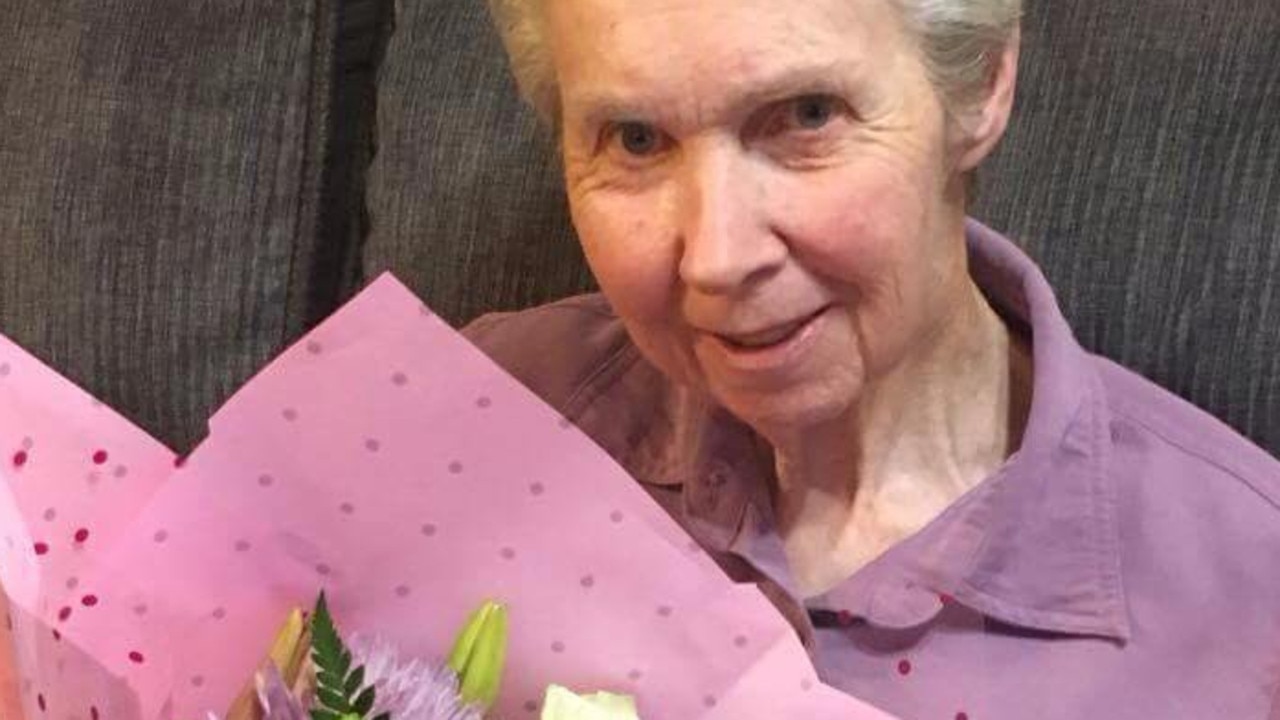25 of the strongest whales rescued as mission continues
Part of the stranded pod has been rescued, with authorities targeting the healthiest and strongest whales to transport back out to see. LATEST FROM THE SCENE + WATCH THE VIDEOS >>
North West Coast
Don't miss out on the headlines from North West Coast. Followed categories will be added to My News.
LATEST, 4.30PM: ONE of the biggest wildlife emergencies in Tasmania’s history continues on the West Coast as rescuers try to save the surviving whales from a mass stranding of 270 animals.
Incident controller Nic Deka from Parks and Wildlife Service said the rescue effort had been reasonably successful and escorted 25 whales by sling and boat through the channel and out to sea.
The animals judged to be the strongest were targeted by rescuers and the number of whales saved is expected to increase towards dark when efforts will be stood down until first light.
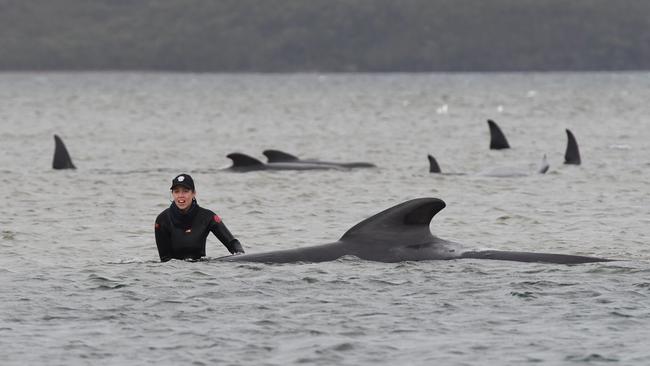
UPDATE, 2PM: The rescue effort to free 270 pilot whales on Tasmania’s west coast is expected to last days, an afternoon update from the Tasmanian Government said.
Sixty people are currently involved in the rescue effort at Strahan at this including 40 staff from across Department of Primary Industries, Parks, Water and Environment (DPIPWE), staff from other Departments and Tasmania Police.
Tasmania’s Department of Primary Industries, Parks, Water and Environment estimates 270 pilot whales are stranded at Strahan, with 200 on a sandbar off the Macquarie Heads boat ramp, another 30 several hundred metres away on another sandbar, and about 30 more along Ocean Beach.
Petuna Seafoodsch farms in the area – has also joined the rescue efforts with lending two cargo nets for lifting, two jet boats, A Yakka (heavy works vessel), several strops; and
five workers to assist the recovery.
Marine Conservation Program wildlife biologist Dr Kris Carlyon said experts involved with rescue efforts are trying to refloat animals and to assess behaviour.
“A lot of the rescue efforts will depend on how these animals respond once they have water underneath them,” he said.
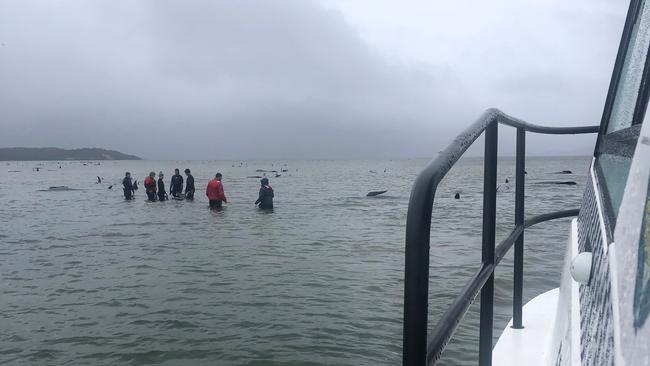
“Triage is going to be quite important here. We have got animals over a large area and in a really challenging location so we are going to take the animals with the best chance to start with and the ones we are able to deal with.
“Some animals may be too big or the location is too difficult to get to. About a third of the animals are deceased. We will update figures later in the day.”
Incident Controller and Parks regional manager Nic Deka said rescuers trialled various rescue efforts this morning before settling on a method which may offer the best chance of success.
“We have now freed a small number successfully that appear to have stayed out at sea and are now scaling up that approach,” Mr Deka said.
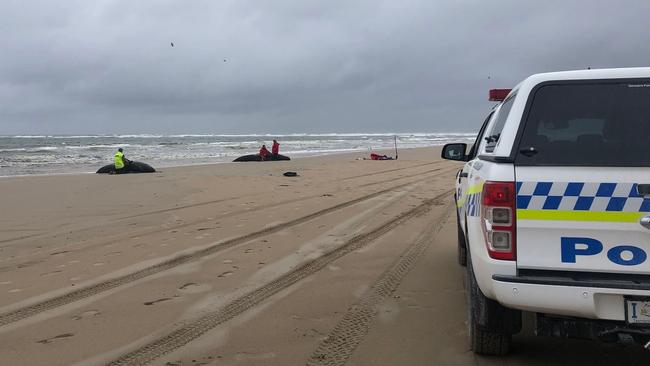
Dr Kris Carlyon said the rescue efforts will likely to take days and will be at the mercy of weather and tide conditions.
“These are long-finned pilot whales they are quite a robust species,” he said.
Mr Deka said tides will increase in the coming days which will aid rescue efforts.
“We have the marine conservation experts on the scene and we have the resources to do the job, He said.
“However, if we find a need for additional volunteers, we will do a call out.”
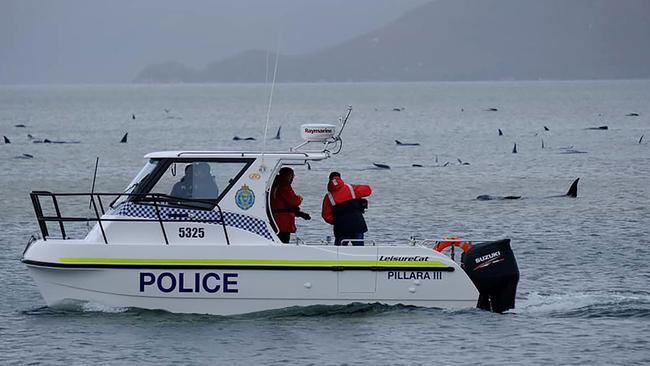
EARLIER: MACQUARIE Heads Campground caretaker Ian Burgess says he wished he could have put the two dying whales he saw on Strahan’s Ocean Beach on Monday afternoon out of their misery rather than watch them struggle for air and slowly die on the sand.
Mr Burgess walked out to Ocean Beach from Macquarie Heads on Monday afternoon as one of the biggest wildlife rescue operations in Tasmania’s history unfolded.
Already a third of the 270-odd long-finned pilot whales stranded on sandbars at the heads and on Ocean Beach have died as rescuers frantically try to refloat animals and urge them into deeper water and out to sea.
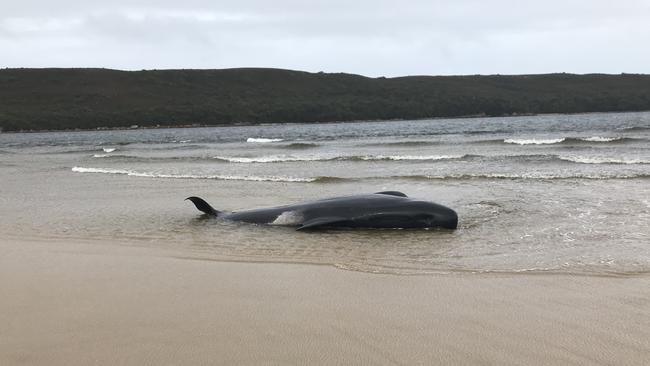
“They are social beasts and it is so sad to see them get freed only to go back to their stranded pod,” Mr Burgess said.
The scene at Strahan’s Ocean Beach is heartbreaking.
About 30 majestic long-finned pilot whales lay on the pristine sand, the waters that brought them into Macquarie Harbour lapping at their dead bodies.
“Two were still alive when I came out on Monday afternoon,” Mr Burgess said.
“If I’d had a rifle I would have shot them. They were on their last legs and suffering, the poor things.”
Mr Burgess, who has been caretaker at the remote but beautiful campground for over two years, said he remembered another mass stranding of pilot whales on Ocean Beach about 10 years ago.
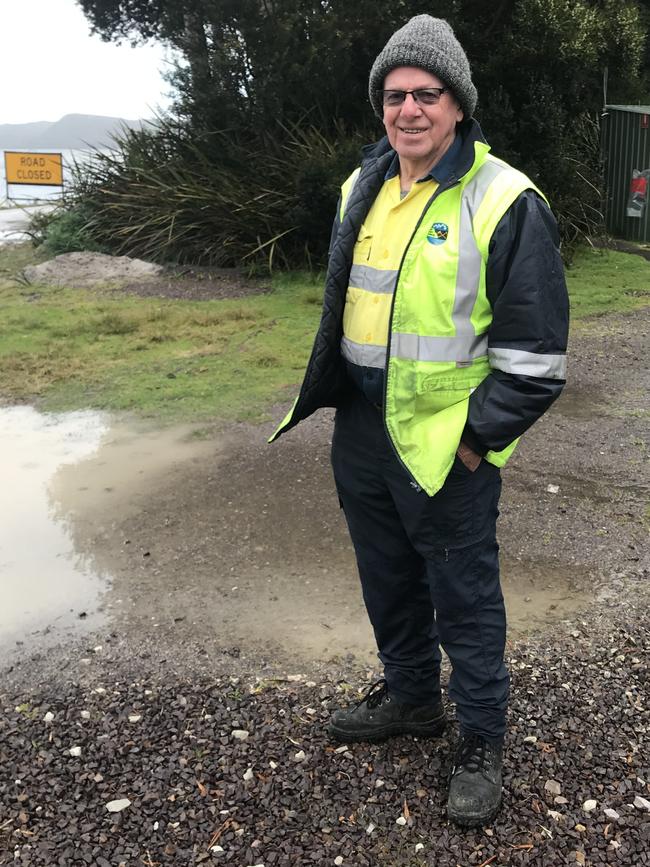
“They were buried in the end. None survived,” he said.
The dead whales on the beach and in the harbour this time around will be towed out to sea, authorities said.
The whales stranded at Macquarie Heads are much quieter today than yesterday when a camper raised the alarm.
Yesterday, the stranded whales were thrashing and making noise as they lay on the sand.
Today they are quiet, some are dead, others are exhausted.
Some rescuers are in boats, some are waist deep in the water manually trying to free the animals.
INITIAL, 7.30am: A third of the 270-odd pilot whales stranded on Tasmania’s west coast have already died as rescuers try to refloat several animals to see how they respond.
Marine Conservation Program wildlife biologist Dr Kris Carlyon said the distressed whales still fighting for life had a decent chance because they were in shallow water and the weather conditions were wet and cold.
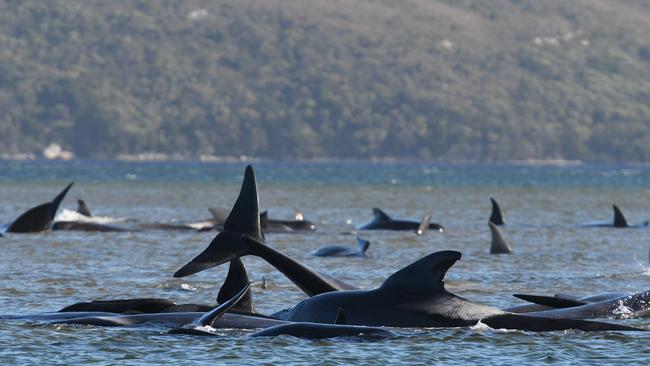
“The conditions are ugly for rescuers but good for the stranded animals,” Dr Carlyon said as 60 rescuers head out to Macquarie Heads early this morning.
“We will refloat several animals to assess their behaviour and see how they respond once free,” he said.
“We have specialised equipment and the whales are semi-buoyant already. It will just involve a bit of grunt. The challenge will come after we refloat – will we be able to herd them out to sea.
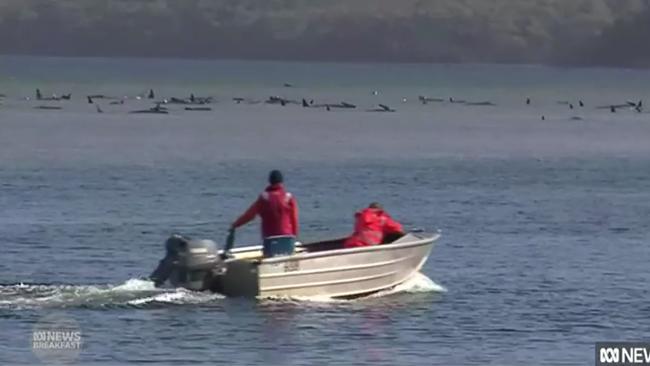
“That will determine where we go from here. We will take those with the best chance in terms of body size, condition and location.”
He said long-finned pilot whales were a robust species and could survive in the shallow water on the sandbars for several days.
Parks and Wildlife Regional Manager Nic Deka said the carcasses of the dead whales would be taken out to sea.
There is a slim chance sharks will enter the harbour to feed on the dead whales adding more complexity to the rescue mission.
The rescue operation is expected to run for several days.
“We are not sure how long the rescue will take. This morning’s efforts are critical in determining what is possible,” Mr Deka said.
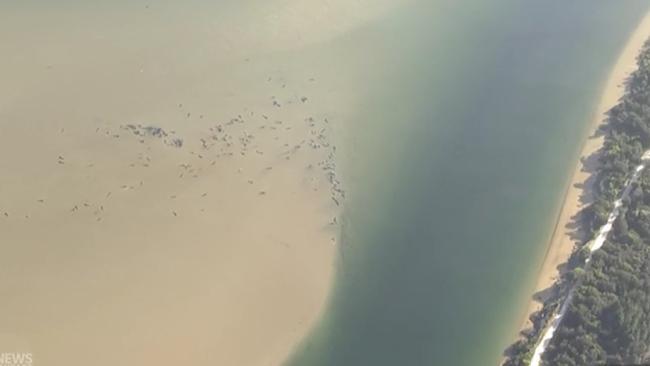
Fish farm workers from nearby salmon farms will join in the rescue effort. along with 60 Department of Primary Industry, Water, Parks and Environment staff and a handful of trained volunteers.
The mass stranding at Strahan is one of the biggest in Tasmania’s history.
Dr Carlyon said the rescue mission would be the most challenging given where the whales have stranded.
It is unsure if the pilot whales were drawn in the heads by food or if the stranding is a case of misadventure with one or two entering and drawing the rest of the pod in.
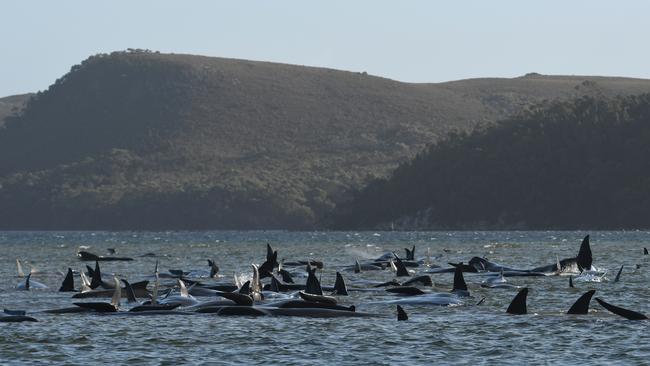
“It is definitely the trickiest I have been involved in 12 years,” he said.
If the whales cannot be refloated manually, boats will be used.
Mr Deka repeated his appeal for the public to watch from a distance despite wanting to help.
“We have the resources and this is not a task for the uninitiated,” he said.


